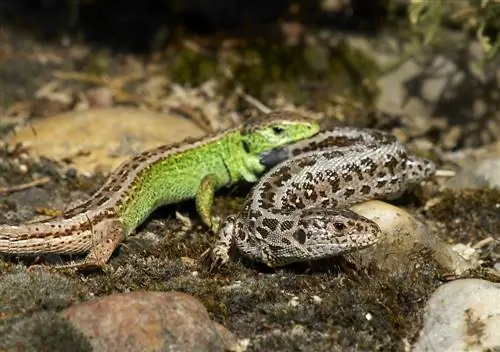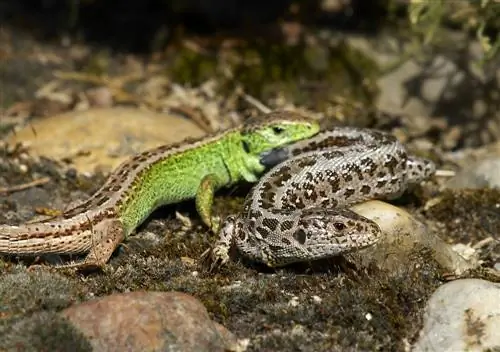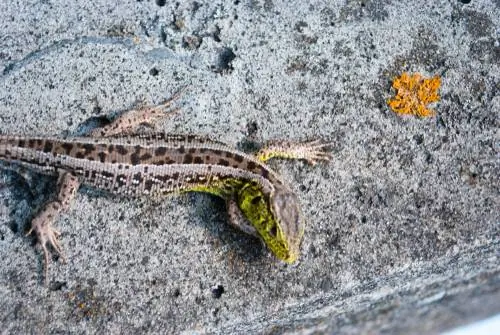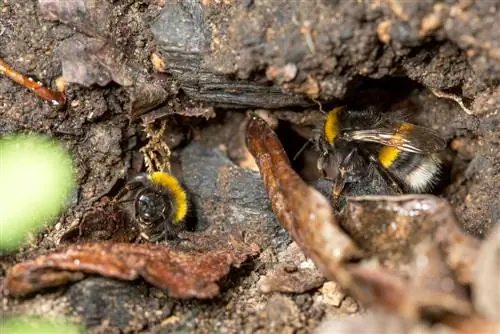- Author admin [email protected].
- Public 2023-12-16 16:46.
- Last modified 2025-06-01 06:02.
If you have a natural garden, you may have seen the shy sand lizards sunbathing. As typical residents of transitional and border areas, the reptiles, which are strictly protected, rely on us to offer them suitable habitats.

What does the sand lizard look like and where can it be found?
The sand lizard is a protected reptile that occurs in sparse forests, heaths, poor or semi-dry grasslands and along traffic routes. It has a brown base color, is 12-24 cm tall and has unique white lines and dots on its back.
The Appearance
Sand lizards have a rather stocky body with short legs. Compared to the forest lizard and the wall lizard, they appear much stronger and somewhat clumsier.
The basic color of the sand lizard is brown. During the mating season, the flanks of adult males turn green. In southwest Germany there are also animals that are completely green during the mating season.
The underside of females is yellowish. The male's belly is green all year round and has black spots. There is an arrangement of white lines and dots running along the back that is unique to each animal.
Size
In our latitudes, sand lizards reach a size of 12 to 24 centimeters, measured from head to tip of tail. After the green lizard, the sand lizard is the second largest species of lizard in our country.
The distribution of the sand lizard
As a former steppe inhabitant, the sand lizard preferred to inhabit drifting sand areas. Since these habitats have increasingly disappeared, it now mainly occurs in replacement habitats.
She is on:
- Clearings of not too dense forests,
- Dry heaths,
- Areas with poor or semi-dry grassland
- along railway lines, streets and canals
meet.
Lifestyle of animals
In winter, sand lizards hide in frost-free burrows that they dig themselves or that have been created by other small animals. From March onwards the males leave their winter quarters and in April the females leave their winter quarters.
Mating season begins at the beginning of May. Mating is preceded by a joint “mating march”. The females then settle in sunny places to promote the development of the eggs.
Eggs are laid in sandy places until mid-July. To do this, the female digs small holes into which she lays 5 to 14 of the soft-shelled eggs.
The males go to their winter quarters as early as August. The females follow in September, the young in October.
Designing a lizard-friendly garden
If you create a variety of habitats in your garden, sand lizards will also settle in your neighborhood:
- The animals can hide under ahedge and find protection from enemies. - In a flower meadow they can hunt numerous prey animals.
- ARock gardenor aNatural stone wall invite you to sunbathe.
- Messy piles of wood offer protection. If the sun reaches these, the sand lizards can warm up after the cool night.
- Sparsely vegetated areas with sandy substrate are ideal for egg laying.
Tip
To protect lizards and their prey, avoid using herbicides and insecticides in your garden. If necessary, you can successfully combat snails, aphids and other harmful insects with environmentally friendly home remedies (€6.00 on Amazon) or plant manure.






